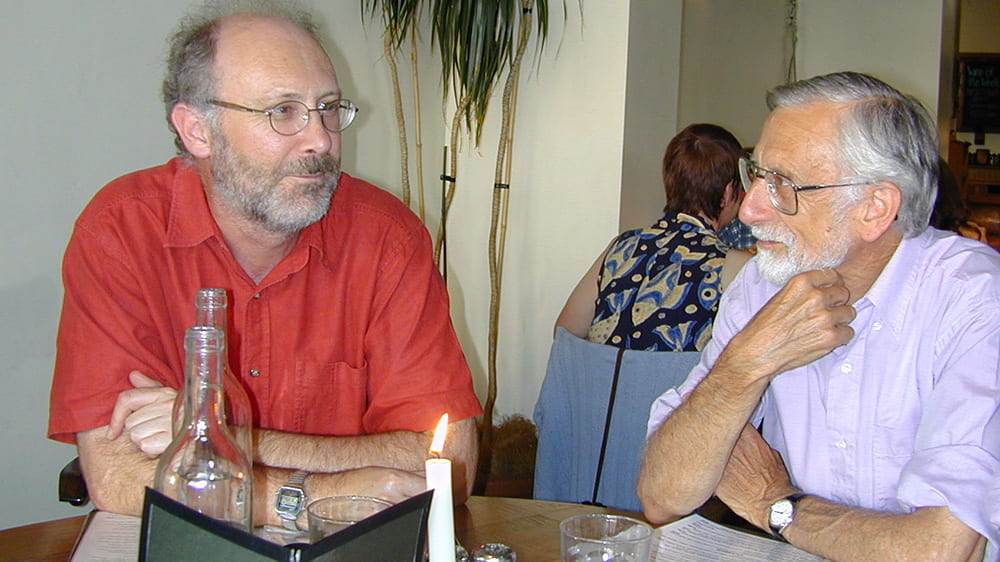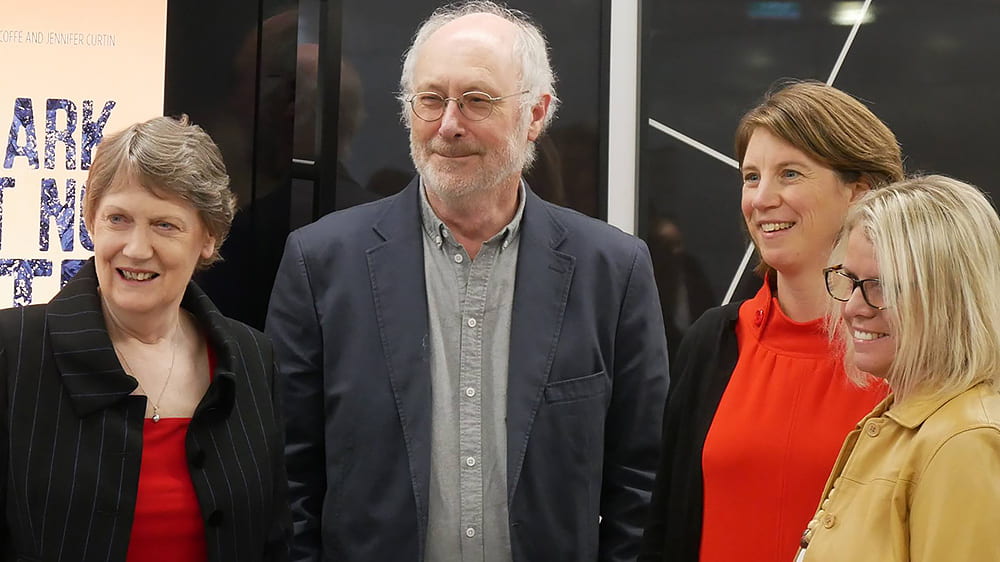History of the New Zealand Election Study
The New Zealand Election Study (NZES) began in 1990. The original principal researchers were Peter Aimer (University of Auckland) and Jack Vowles (University of Waikato). Up until that time, New Zealand had no continuous series of post-election election studies based on national sample surveys. Only Alan Robinson and Stephen Levine had conducted such a study in 1975, and it was not continued. All other academic studies had been based on samples of electorates, usually marginal, although some of the data remains useful and can be used longitudinally.
Aimer and Vowles were convinced that New Zealand should have a national election study: not just to collect data for scholarly analysis, but also to provide a resource for public discussion and debate about the meaning of elections and the intentions of voters. As they promised to those they asked to participate in 1990, the NZES would report the ‘voice of people’: both in its overall import, and in its nuances among subsets of the voting population, while also remaining aware of the complexities and frequent ambiguities within public opinion.
The dataset and book that emerged from the 1990 NZES were a major step forward, were well-reviewed, and hailed as bringing New Zealand into the international literature of electoral studies. Charles Crothers assisted with one of the chapters and has remained a strong supporter ever since. Funding had come from the Social Science Research Fund Committee, merged into the Foundation for Research Science and Technology (FRST) by the time of the 1993 Study, when Raymond Miller and Helena Catt of the University of Auckland and Jim Lamare of the University of Canterbury joined the team. Aimer and Vowles had co-led the first two studies, but in 1996 leadership passed solely to Vowles at Waikato.
New Zealand’s shift to MMP led to wider interest in the NZES, and FRST funding was secured for the 1996, 1999, and 2002 elections. These were exciting times. Jeffrey Karp and Susan Banducci joined the project from the United States, sharing two Research Fellow and Research Assistant positions between them. The University of Waikato’s generosity allowed the NZES to mount a pre-election survey stretched across the campaign, following up those sampled post-election: a ‘rolling cross-section’ study. Over the first three MMP elections, campaign dynamics were among the largest estimated internationally at the time, fitting this methodology to a tee. The NZES was one of the first national election studies to adopt this method, following Canada and the Netherlands. Richard Johnston, who had pioneered this approach in Canada, acted as an advisor and visited New Zealand for the 1996 election. With Ann Sullivan (Ngāpuhi, Ngati Manu) joining the team, the NZES began over-sampling the Māori electorates, selecting sufficient respondents to analyse their particular politics. The NZES focus on Māori paid considerable dividends for the 1999 election when the electorates shifted from Labour to New Zealand First. For the 1999 election, the NZES also commissioned a special Maori Election Study, expanding the sample further to those of Māori descent.

Jack Vowles & Peter Aimer in 2001
In 2002 Jack Vowles moved to the University of Auckland, and the NZES became centred there. 2002 was the end of FRST funding. Further support was gained from Andre Blais at the University of Montreal, with a focus on strategic voting. From 2005 onwards, funding became less certain and the pre-election campaign studies came to an end. At this point, the New Zealand Electoral Commission entered the picture, providing sufficient core funding to help attract internal research funding from the University of Auckland and AUT. The Centre of Methods and Policy Applications in the Social Science (COMPASS) at the University of Auckland, led by Peter Davis also entered the picture, providing further funding and support. For 2005, with Ann Sullivan and Kaapua Smith, Tania Rangiheuea designed a Māori questionnaire supplement as part of her doctoral research.
In 2007, Jack Vowles took up a position at the University of Exeter in the UK, but with the continued support of the Electoral Commission, COMPASS, and the University of Auckland, a 2008 NZES was mounted, still under his leadership. Funds also came from the Treasury, seeking data on social mobility, and Timothy Hellwig, who used part of his American National Research Foundation budget to purchase a module of questions on globalisation. Jennifer Curtin joined the collaborative team after taking up a position at the University of Auckland in 2006. The 2008 NZES budget was a remarkable patchwork of different sources.
In 2011, Jack Vowles continued his role of marshalling the budgetary wagons from the UK. The Electoral Commission and COMPASS again provided the backbone of the budget, with some support from AUT and the McDougall Trust from the UK. COMPASS also administered the survey, led by Gerry Cotterell. By the time of the election, Jack Vowles was contemplating his return to New Zealand, this time to Victoria University of Wellington in August 2012.
There had been no books based on the 2005 and 2008 NZES’. Nevertheless, interest in the NZES continued to grow, and Jack Vowles put together an edited book drawing upon the 2011 NZES. COMPASS and Electoral Commission support continued into 2014 and 2017, with top-ups from Victoria University and the University of Auckland. Hilde Coffe of Victoria University and Jennifer Curtin of the University of Auckland joined to co-author the 2014 election book. In 2017, Jack and Jennifer shared the editorial role. Significant funding came from two scholars at the University of Durham in the UK wishing to use NZES turnout data: Nick Vivyan and Patrick Kuhn. For the 2020 Study, Victoria University considerably boosted its funding, recognising the value of the programme, and Janine Hayward at Otago University also brought further support. The Public Policy Institute at the University of Auckland, led by Jennifer Curtin, took over the role of survey administration, making significant investment in hardware and software to underpin the project. Lara Greaves (Ngāpuhi) joined the project, continuing Māori input into the programme.

The NZES team with Helen Clark at the launch of A Bark But No Bite?: Inequality and the 2014 New Zealand General Election in 2017
Methodologically, the NZES has primarily relied on self-completion postal surveys, using the electronic electoral rolls as its sampling frame. Here, the inspiration came from the Australian Election Study (AES), set up by Ian McAllister in 1987. AES support was very helpful, including their permission to use their distinctive questionnaire cover. From 1990 to 2002, there was an additional ‘telephone top-up’, presenting a shorter version of the questionnaire to non-respondents for whom phone numbers could be found. From 1993 onwards, the NZES also contacted previous participants and asked them to participate again, forming a panel that could provide a good basis for investigating changing behaviour. From the outset in 1990, the NZES has checked the publicly-available master rolls to confirm that those who said they voted actually did, and corrected their data accordingly.
No research of this kind is free of challenges. The electoral roll is the most obvious sampling frame, but it excludes those not on the rolls who should be – usually about 8 percent of the voting-eligible population. Of course, those people cannot vote, but they are missing from the statistics on those who don’t vote. However, official turnout figures also exclude the non-enrolled. A bigger challenge has been declining response rates. While there is evidence that lower response rates do not seriously bias data about party choice, more deep-seated differences – such as turnout behaviour – are more problematic. For this reason, the NZES has also collected turnout data for non-respondents as well as respondents, and researchers have begun to use this data. For the first time in 2020, NZES respondents were offered a small monetary gift as thanks for their participation.
Bigger challenges lie ahead. The postal system currently remains fit for purpose, but its performance needs to be kept under review. Reduced use of landlines means a telephone top-up or a return to campaign surveys would deliver diminished returns. Since 2005 the NZES has included an online option: rather than fill out and post back their questionnaire, respondents can complete the survey online. This saves the NZES data capture costs, but the uptake remains unexpectedly low. There is pressure to increase online use to reduce costs. It would be even cheaper to buy access to an online panel, but such panels are not randomly selected. Pushing all randomly selected respondents online is another option, but the low uptake of the online interface could mean a lower response rate.
Nonetheless, the future is promising, with greatly increased financial support from Victoria University of Wellington, and a strong investment in supporting administration and infrastructure by the University of Auckland’s Public Policy Institute. A strong team of researchers is mounting the 2020 NZES, with emerging scholars beginning to make their marks. The NZES is highly regarded internationally, has a wide network of contacts and collaborators around the world, and contributes data to the Comparative Study of Electoral Systems, a major resource for research into comparative political behaviour.
Jack Vowles
August 2020
Further Reading
Vowles, J. (2000). The New Zealand election study. Political Science, 52(2), 150-157. 10.1177/003231870005200205
Greaves, L. M., Oldfield, L., Von Randow, M., Sibley, C. G., & Milne, B. (2020). How low can we go? Declining survey response rates to new zealand electoral roll mail surveys over three decades. Political Science, 72(3), 228-244. 10.1080/00323187.2021.1898995
Levine, S., Roberts , N. S., & Vowles, J. (1998). An inventory
of New Zealand voting surveys, 1991-98. Political Science, 50(1), 111-118. 10.1177/003231879805000106
Bean, C. S., Levine, S., & Roberts, N. S. (1991). An inventory of New Zealand voting surveys, 1987-90. Political Science, 43(2), 78-85. 10.1177/003231879104300205
Bean, C. (1986). An inventory of New Zealand voting surveys 1949-84. Political Science, 38(2), 172-184. 10.1177/003231878603800206